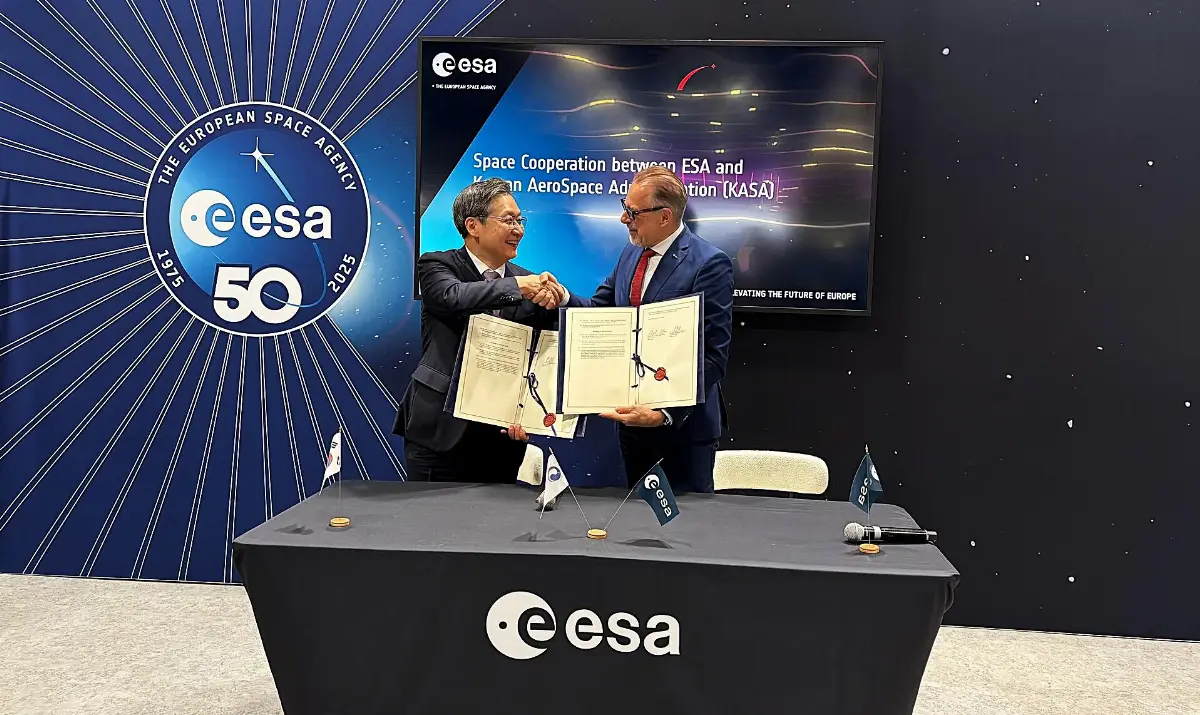
New space axis: Europe forges a decisive pact with Seoul
Signed in Sydney a MoU between the European Space Agency and the newly formed Korea AeroSpace Administration

The strategic agreement initially focuses on space weather monitoring and on reciprocal access to Earth-based communication networks, bolstering the resilience of global missions
The European Space Agency (ESA) and the Korea AeroSpace Administration (KASA) have announced a new phase of cooperation for the peaceful use of Space. The agreement, formalized through a Memorandum of Understanding (MoU) signed during the 76th International Astronautical Congress (IAC) in Sydney, Australia, represents a crucial step for KASA, the agency established in 2024 to manage South Korea's space development, whose first talks with ESA began less than a year earlier at the IAC in Milan.
The collaboration takes off immediately with two priority areas: reciprocal access to ground communication infrastructure and space weather monitoring. An implementation agreement will allow the agencies to mutually use each other's ground stations for telemetry, tracking and command (Telemetry, Tracking and Command - TT&C) functions. This complements a similar understanding already in force since 2011 with the Korea Aerospace Research Institute (KARI), the research institute affiliated with Kasa. In practice, ESA's Estrack network, which includes six stations and three deep-space antennas, will have access to the Korea Deep Space Antenna at Yeoju. Such cooperation is essential to increase the resilience of global space missions, filling coverage gaps and providing backup tracking stations in case of environmental issues or congestion at primary facilities.
In parallel, ESA and KASA have signed a joint declaration of intent to explore cooperation in monitoring and developing capabilities related to space weather. In the future, the agencies could combine data from ESA's upcoming Vigil mission, bound for the Lagrange point L5, with those from a planned Korean solar probe for the L4 point. The synergy between the two missions would deepen research on solar activity and space weather forecasting, supporting the goal of delivering a comprehensive space weather service by the 2030s.
The framework Memorandum of Understanding also paves the way for future collaborations across broad areas including space science, space exploration, crewed spaceflight, space applications, space sustainability and strengthening satellite navigation systems. In this regard, cooperation on missions such as Leo-Pnt is envisaged to improve the accuracy and stability of navigation signals, as KASA will develop its own Korea Positioning System (KPS).
AVIONEWS - World Aeronautical Press Agency